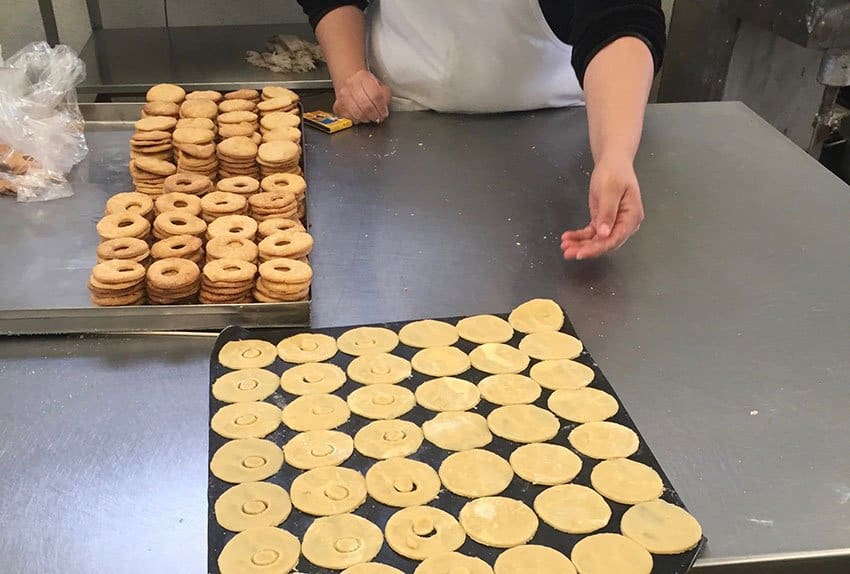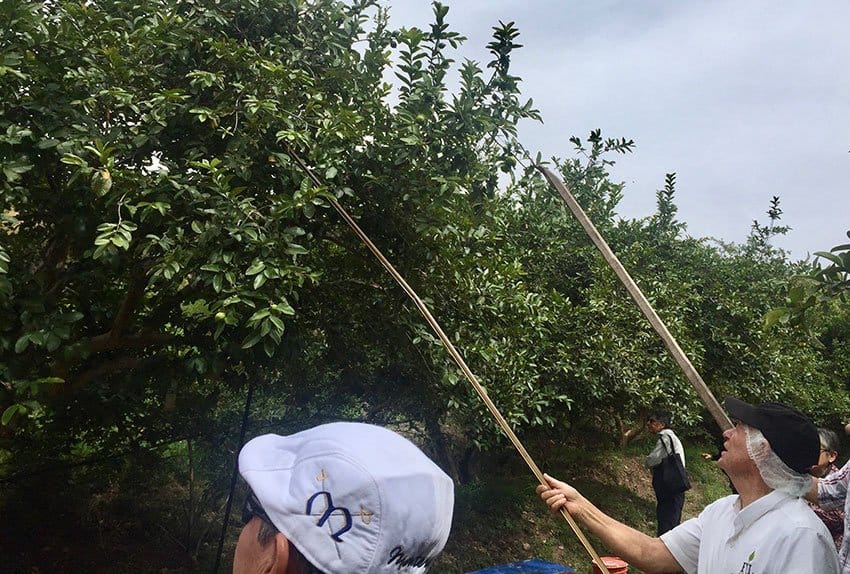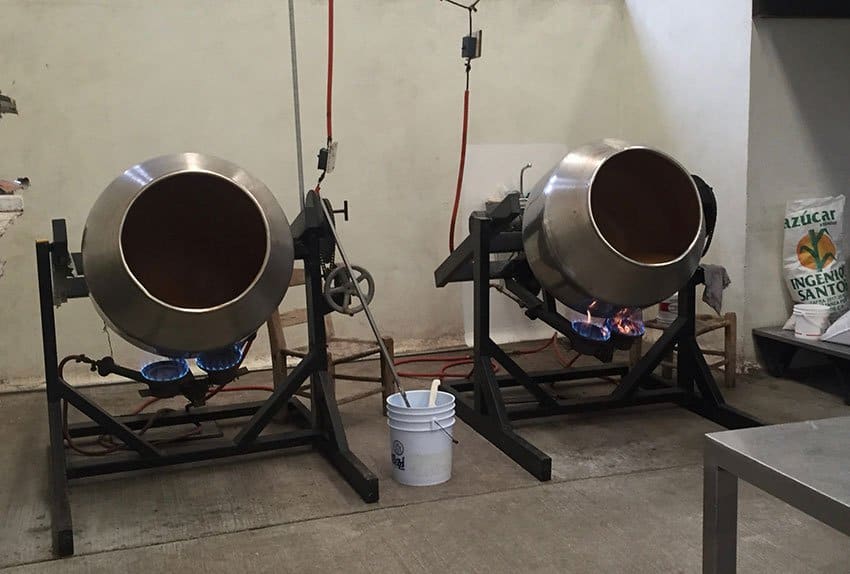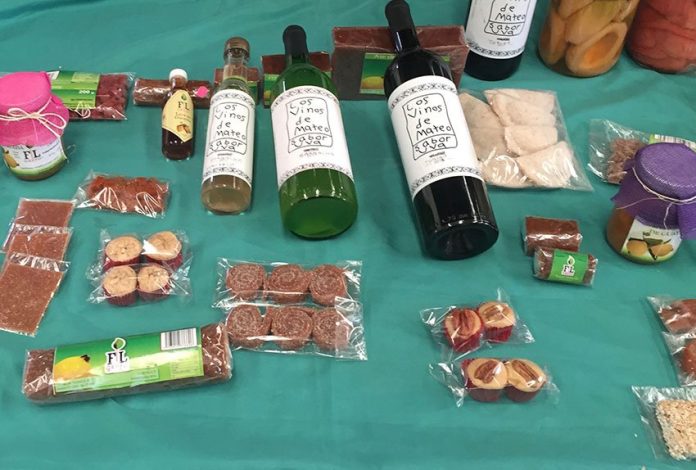“There was always so much guava left over,” says Don Saul Landeros Cardona of the 45,000 tonnes of fruit that remains in Calvillo, Aguascalientes, after fulfilling export needs.
Calvillo is a “magical town” about 45 minutes outside the city of Aguascalientes and is known for its guava production. Fruit trees dot the landscape and it is said that at harvest time the whole town smells of the citrusy, sweet guava goodness.
But arriving at the sweets manufacturer Frutland, I had little idea of just how many different sweet treats could be made with fruit. However, I was soon to find out.
First we explored the grounds, where lines and lines of guayabos — as the guava trees are known in Spanish — lined the pathways. The fruits hanging from the tree were green but beginning to turn yellow, a sign that the harvest was near.
Landeros, the owner of this family-run business that started 24 years ago from a desire to make use of the huge excess of guava, is a friendly man with a glint in his eye.

“Let’s have a contest. Who can harvest the biggest guava,” he said, handing out long sticks to help us fish the fruits from the tree.
“That one, no that one!”
We shouted back and forth to each other as we looked for the largest fruits hidden among the bright green leaves of the guayabos. Fruit fell, and we tried our best to catch them as they rocketed down.
The less ripe guava has a thick green skin, not unlike a lime, which appears to thin out and lighten as the fruit reaches maturity. Prized for their 16 vitamins and high levels of fiber, guavas are popular worldwide.
The nomadic indigenous people of the area, the Chichimecas, used to use the roots of the tree to aid them with stomach issues.
“Guavas and the guava tree root properties helped them stay healthy,” Landeros told us as we held on to our prized fruits, wanting to eat them but resisting.

Luckily, a plate of guava halves sprinkled with spicy chilé tahín was soon passed around to sate our desire.
Guavas still in hand it was time to head into the factory. With hairnets on we were guided inside.
The first thing I noticed is what looked much like a cement mixer turning the guava pulp around and around above a flame. The smell was wonderfully fresh and made my mouth water. The table close to the “cement mixers” was lined with workers cutting the soft candied guava into slices, perfect squares and rectangles, and even circles. Looking around I see tables of people making what look like cookies and tiny pasty-shaped goodies.
This family business is divided into different brands that are all named after Landeros’ daughters. Violeta is the line of dehydrated products, Noemi is a line of products with chocolate, Luci is the home of the candied guava jelly and jellos and MariCri is a line of products for children.
If this doesn’t show that this is truly a business that is passing down through the generations, then perhaps the guava wines will. Called Los Vinos de Mateo (Mateo’s wines) the product is a sweet syrupy drink that tastes not unlike guava juice and comes complete with a label drawn by Landeros’ seven-year-old grandson of the same name.
Having sipped a little wine, it was now time to try a few of the edible treats we were hearing so much about. There was everything from a soft candied guava covered in chile, another sweeter version covered in sugar, alegrías made with puffed amaranth combined with guava, guava rolls mingled with coconut and cranberry, guava cookies, a whole variety of different flavors and textures all made from one fruit.

The different tangs, sweet, spicy and sour played around on my taste buds as I listened to Landeros speak with so much passion for his work.
Since Frutland began some 24 years ago other companies have opened up in their wake, also creating candies from guava. Landeros doesn’t seem fazed by that but rather welcomes it.
“We were the pioneers and our aim is to be the best,” he said with a confident smile.
Saving the best for last, Landeros guided us to an area in the far-right corner of the small factory. Here he passed out a candy that looked like a tiny cupcake. He guided us to remove the red paper casing and I felt like Charlie unwrapping the prized chocolate wrapper that would win him a trip to the Chocolate Factory.
This tiny cupcake was, in fact, a guava fruit roll lined with a thin guava liquid compote and topped with dulce de leche and a pecan.
“You must eat a bite that lets you taste all the different parts together, right down the middle,” said Landeros, the glint in his eye returning.
I took a bite and the sweet, sharp flavors of the guava roll combined with the creamy dulce de leche to create the most exquisite combination. Sounds of delight echoed through the group and Landeros smiled with the satisfaction of a man who prides himself on innovation.
Talking about the future, Landeros explains that they are about to launch some products in Paris and that they are looking to go international.
“All these flights that are arriving from Germany,” Landeros said referring to the new Mercedes Benz factory in Aguascalientes that is bringing Germans to the state. “They are going back empty. We need to fill those planes with guava,” he joked.
All that was left now was to judge the competition. Who harvested the largest guava? I came in a happy third place, winning a guava alegría.
Before leaving we all headed off to fill baskets full of guava goodies at the small store at the end of the factory.
As I headed to the door, I heard Landeros talking about Calvillo.
“Here we have so much tranquility, and it is magical.”
If Frutland was anything to go by, I was going to like Calvillo very much.
• To learn more about Frutland see their website. To visit Frutland and the rest of the magical town of Calvillo, take a tour with Asitur, which takes in Frutland, a local candle maker, the church, a handicraft store and lunch overlooking the Presa de Malpaso.
Susannah Rigg is a freelance writer and Mexico specialist based in Mexico City. Her work has been published by BBC Travel, Condé Nast Traveler, CNN Travel and The Independent UK among others. Find out more about Susannah on her website.
